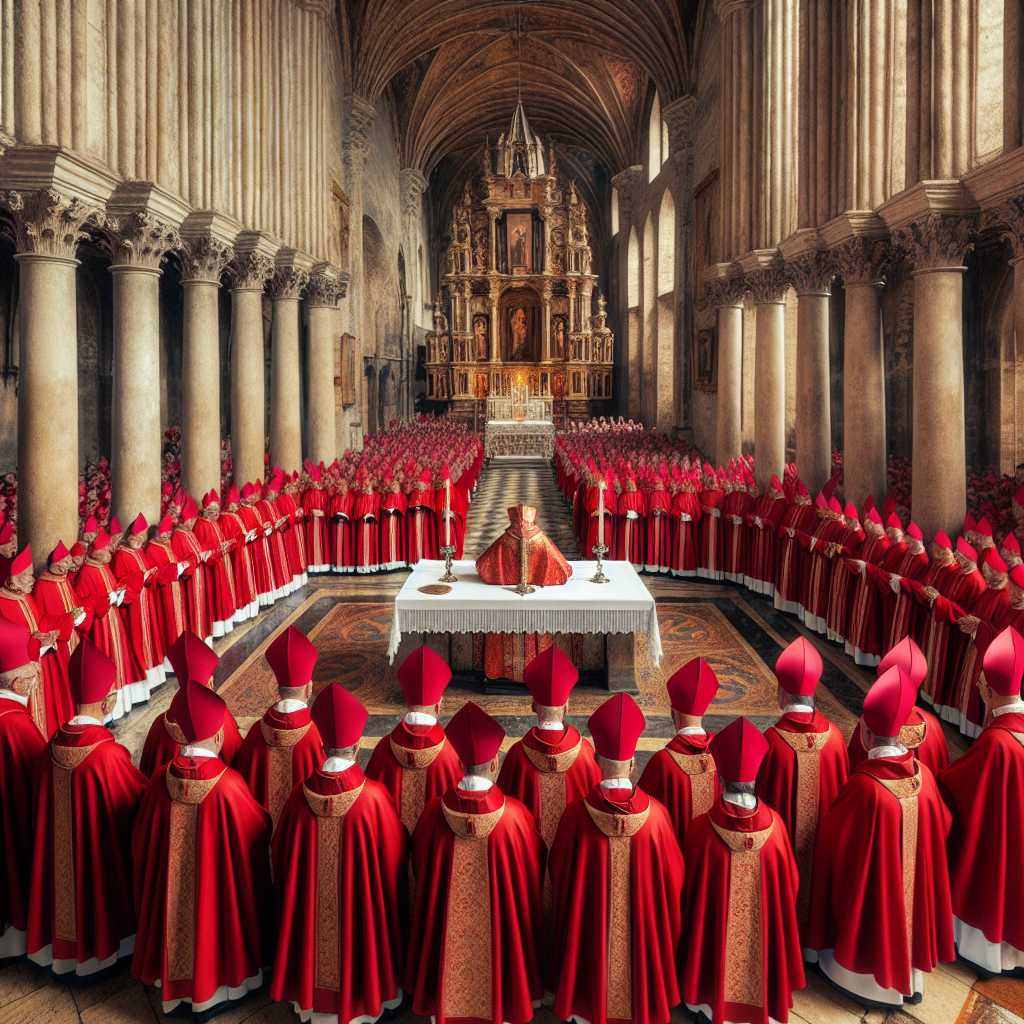The Significance and Role of Cardinals in the Catholic Church
In the Catholic Church, the term “cardinal” takes on a special significance that reflects both ecclesiastical hierarchy and fundamental church functionality. This article delves into the historical evolution, current roles, and ceremonial aspects of cardinals, shedding light on this distinguished rank within the clergy and its impact on the life of the Church.
Historical Evolution of the Cardinalate
The college of cardinals has evolved significantly over the course of history. Originally, the term “cardinal” referred to key clergy of prominent churches in Rome who were pivotal advisors to early popes. As such, they have always been central to the governance of the Church, particularly in papal elections. Over time, their role extended globally due to the reach of the Catholic Church.
During the early medieval period, cardinals were simply clergy tied to Rome’s leading churches – cardinal priests from the city’s basilicas, cardinal deacons serving its various districts, and cardinal bishops overseeing suburban diocesan areas. It was not until the 11th century that the College of Cardinals began to take form as an established body for the primary purpose of electing the pope.
Their influence expanded notably in 1059 with Pope Nicholas II’s papal bull, outlining that henceforth only cardinal-bishops can elect a new pope – later extended to all cardinals. The structure and protocols continued to evolve into what is recognizable in today’s Vatican institutions by the time of the Council of Trent in the 16th century.
The Cardinals’ Role in Modern Times
Today’s cardinals serve multifaceted roles within the Catholic Church:
–
Election of a New Pope: All cardinals under the age of eighty are eligible voters in papal conclaves, which take place following a pope’s death or resignation. They gather in silent deliberation, casting votes until a new pope is chosen.
–
Close Advisors to the Pope: They act as consistory members advising the pontiff on church matters and are often tasked with conveying significant communications and decisions to their respective communities.
–
Church Governance: Cardinals frequently head powerful dicasteries and congregations and are involved in numerous administrative aspects relating to doctrine, liturgy, canon law, diplomacy, evangelization, finance, and more.
–
Representatives of Global Catholicism: Reflecting broader global demographics, cardinals hail from every continent. They symbolize their communities’ concerns, ensuring diverse representation and voicing issues from different geographical areas during deliberations and in policy formulation. Cardinals’ Attire and Symbolism
Cardinals’ Attire and Symbolism
The visual distinction of cardinals in their symbolic red attire is emblematic of their readiness to defend their faith “usque ad sanguinis effusionem” (Latin for ‘even to the shedding of blood’). This symbolism is embedded in rituals like the consistory ceremony where newly appointed cardinals receive a scarlet zucchetto (skullcap) and biretta (hat) from the pope.
The rich garb reserved for cardinals includes the cassock with thirty-three buttons symbolizing Christ’s years on Earth, sash (fascia), rochet worn over a cassock for liturgical purposes, and the red mozzetta – a short cape draped over their shoulders during certain ceremonies.
Ceremonial Contributions
Beyond administration and advisory functions, cardinals contribute significantly to ceremonial aspects. They are often seen leading high masses, venerating relics, and participating in beatifications and canonizations. The way they uphold these traditions helps perpetuate centuries-old rites that engage faithful followers worldwide.
Challenges Faced by Cardinals Today
Despite their reverence within church hierarchy, cardinals are not insulated from modern challenges. In a world facing secular pressures and internal crises including clerical abuse scandals, financial misconduct allegations among senior clergy members, interreligious dialogue needs, and changing societal values – cardinals have their beliefs and resilience put to test consistently.
It’s incumbent upon them not only to adhere exemplarily to church teachings but also to steer through controversies with transparency while contributing meaningfully to healing wounds within their global congregation.
